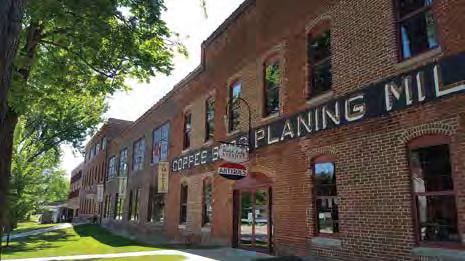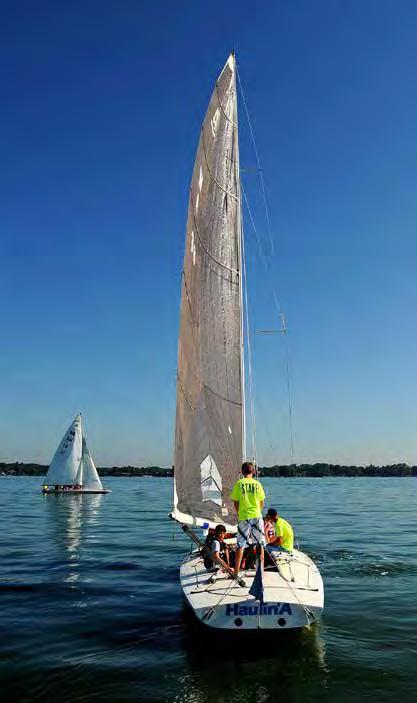
3 minute read
Water Warrior
Shutterstock.com
Lake aging is natural
But, you can help slow the process
by Dr. Nate Bosch, director of the Lilly Center for Lakes & Streams
Did you know that lakes age? Although they do not retire from a full-time job or become a bit forgetful, they do change in several important ways while aging. And, our actions can either speed up or stabilize the process.
First phase
Lakes typically begin as oligotrophic lakes with few nutrients, and few aquatic weeds and algae. With minimal plant production, there is little buildup of mucky sediment at the bottom of the lake. Thus, the lake remains deeper and has cooler water temperatures. Due to the lack of algae, the water is very clear, as well. And without algae growth, fewer fish inhabit the lake to eat the algae.
Second phase
The next stage in the lake aging process occurs with the mesotrophic lake. There are more nutrients in the lake, which leads to more plant production. Sediment accumulates on the bottom of the lake, creating a shallower and warmer habitat. The water clarity is decreased from the higher populations of algae in the water, giving it a greenish coloration. And more fish can live in the lake as their food sources increase.
Final phase
A eutrophic lake is the final stage in the aging. This kind of lake is characterized by intense weed and algae growth. Sediment builds at the bottom of the lake quickly — such that it eventually becomes a wetland with shallow depths and different plant communities. As a result, water clarity is minimal. High decomposition rates of the dead plant material at the bottom of the lake uses up oxygen, which fish need to breathe. Consequently, the diversity of fish species is reduced while less desirable species remain.

Overall, this aging process is known as eutrophication. All of our local lakes can be categorized as one of these three stages — oligotrophic, mesotrophic and eutrophic. Left alone, a lake’s natural aging process would likely take hundreds, if not thousands of years.
To learn more about the lakes in Kosciusko County, visit lakes.grace.edu or call 574.372.5100, ext. 6445.
The Lilly Center for Lakes & Streams at Grace College conducts research, provides resources, engages and educates residents, and collaborates with local organizations to make the lakes and streams of Kosciusko County clean, healthy, safe and beautiful. To date, the Lilly Center has conducted scientific research on over 30 streams and 40 lakes. The Lilly Center is driven to create a legacy of stewardship by equipping community members, visitors and future generations with understanding and to enjoy the county’s natural beauty. For more information, visit lakes.grace.edu.
Because many lakes in Kosciusko County are surrounded by agricultural or residential areas, they can age more quickly than lakes left to themselves.

There are several ways you can help slow aging from your own backyard.
» try reducing the use of lawn
fertilizers
» prevent soil erosion by
landscaping with native plants
» compost yard waste rather
than allowing it to enter a local lake or stream
These small changes will help keep lakes healthy for generations to come.

Garden Center
Quality Service with a Hometown Touch
www.claytongardencenter.com
574-834-2249 claytongc@earthlink.com
7185 N. S.R. 13 North Webster, IN 46555
MEET - SHOP - EAT












